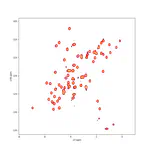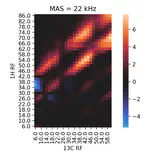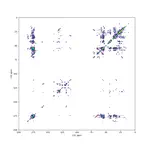Hello
My name is Miguel. I am a researcher working at the intersection between Biology and Artificial Intelligence.
Nowadays I am interested in AI-driven protein science and optimization problems.
Interests
- Protein Science
- Drug Discovery
- Machine Learning
- Large Language Models
Education
PhD in Organic Chemistry, 2018
University of Barcelona, Spain
MSc in Organic Chemistry, 2013
University of Barcelona, Spain
BSc+MSc in Chemistry, 2012
University of Oviedo, Spain
Experience
Senior applied research scientist
Develop and apply state-of-the-art methods in protein engineering and other optimization problems.
Research engineer
Visiting researcher
Helmholtz Information & Data Science Academy (HIDA) grantee at the MDC Bioinformatics unit.
Projects:
- Protein:drug interaction prediction with geometric deep learning and protein language models.
Postdoctoral researcher
Projects:
- Liquid-liquid phase separation of human FUS by solid state Nuclear Magnetic Resonance .
- Regulation of plant salt-stress response by phosphorylation of protein CC1.
- Structural disorder in enteropathogenic bacterial proteomes.
Tasks:
- Method development
- Solid state and solution Nuclear Magnetic Resonance data acquisition
- Data analysis
PhD student
Thesis: A novel regulatory unit in the N-terminal region of c-src.
Tasks:
- Protein expression and purification.
- Solution Nuclear Magnetic Resonance data acquisition.
- Data analysis.
Publications
Quickly discover relevant content by filtering publications.
(2024).
Generative Model for Small Molecules with Latent Space RL Fine-Tuning to Protein Targets.
In Arxiv.
(2023).
Offline RL for generative design of protein binders.
Accepted in New Frontiers of AI for Drug Discovery and Development workshop, NeurIPS 2023..
(2023).
FrameDiPT: SE(3) Diffusion Model for Protein Structure Inpainting.
Accepted in Machine Learning in Structural Biology workshop, NeurIPS 2023..
(2021).
The pathogen-encoded signaling receptor Tir exploits host-like intrinsic disorder to assist infection.
Accepted in Nature Communications biology (February 2024). Find the published version here.
(2019).
Integrating disorder in globular multidomain proteins: Fuzzy sensors and the role of SH3 domains.
In Archives of Biochemistry and Biophysics.
(2019).
A Myristoyl-Binding Site in the SH3 Domain Modulates c-Src Membrane Anchoring.
In Iscience.
(2018).
Farseer-NMR: Automatic Treatment, Analysis and Plotting of Large, Multi-Variable NMR Data.
In Journal of Biomolecular NMR.
(2018).
Intramolecular Fuzzy Interactions Involving Intrinsically Disordered Domains.
In Frontiers in Molecular Biosciences.
(2018).
A novel regulatory unit in the N-terminal region of c-Src.
Universitat de Barcelona.
(2017).
The Unique Domain Forms a Fuzzy Intramolecular Complex in Src Family Kinases.
In Structure.
(2015).
The SH3 Domain Acts as a Scaffold for the N-Terminal Intrinsically Disordered Regions of c-Src.
In Structure.
(2013).
Lipid binding by disordered proteins.
In Protocol Exchange.
Contact
- miguelarbesu@gmail.com
- Berlin, Berlin 10115






